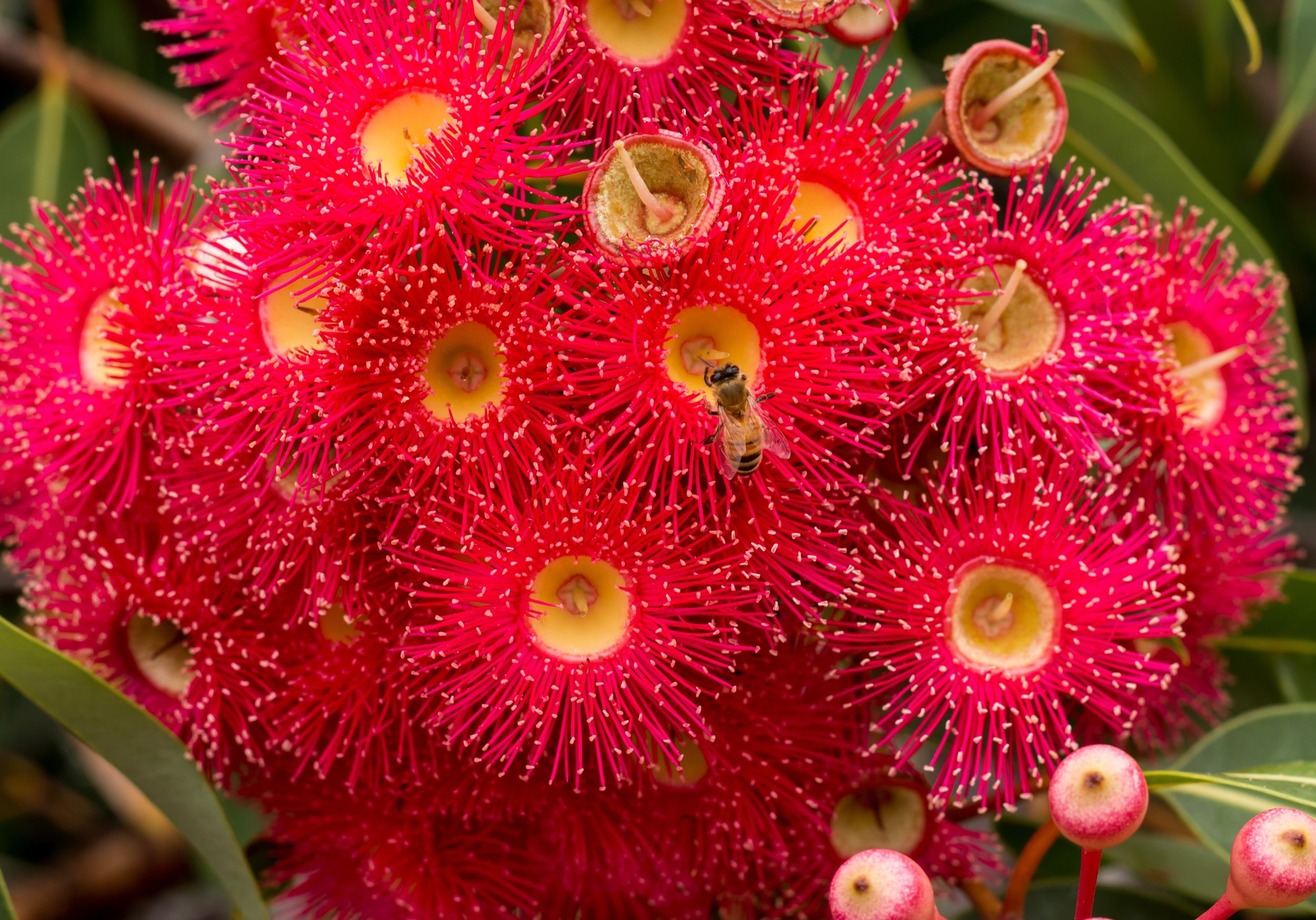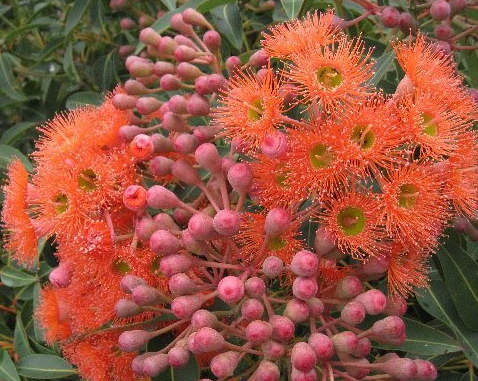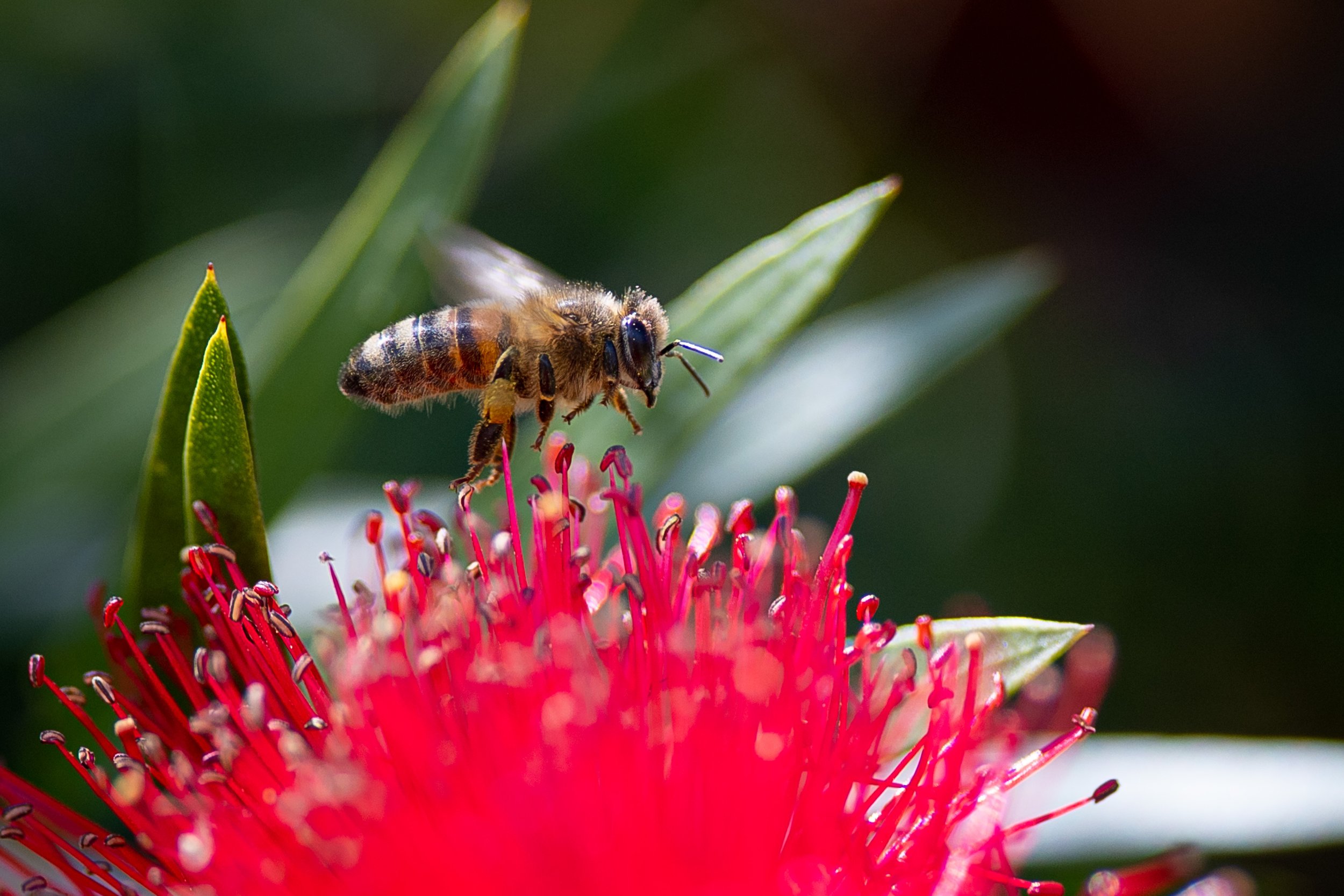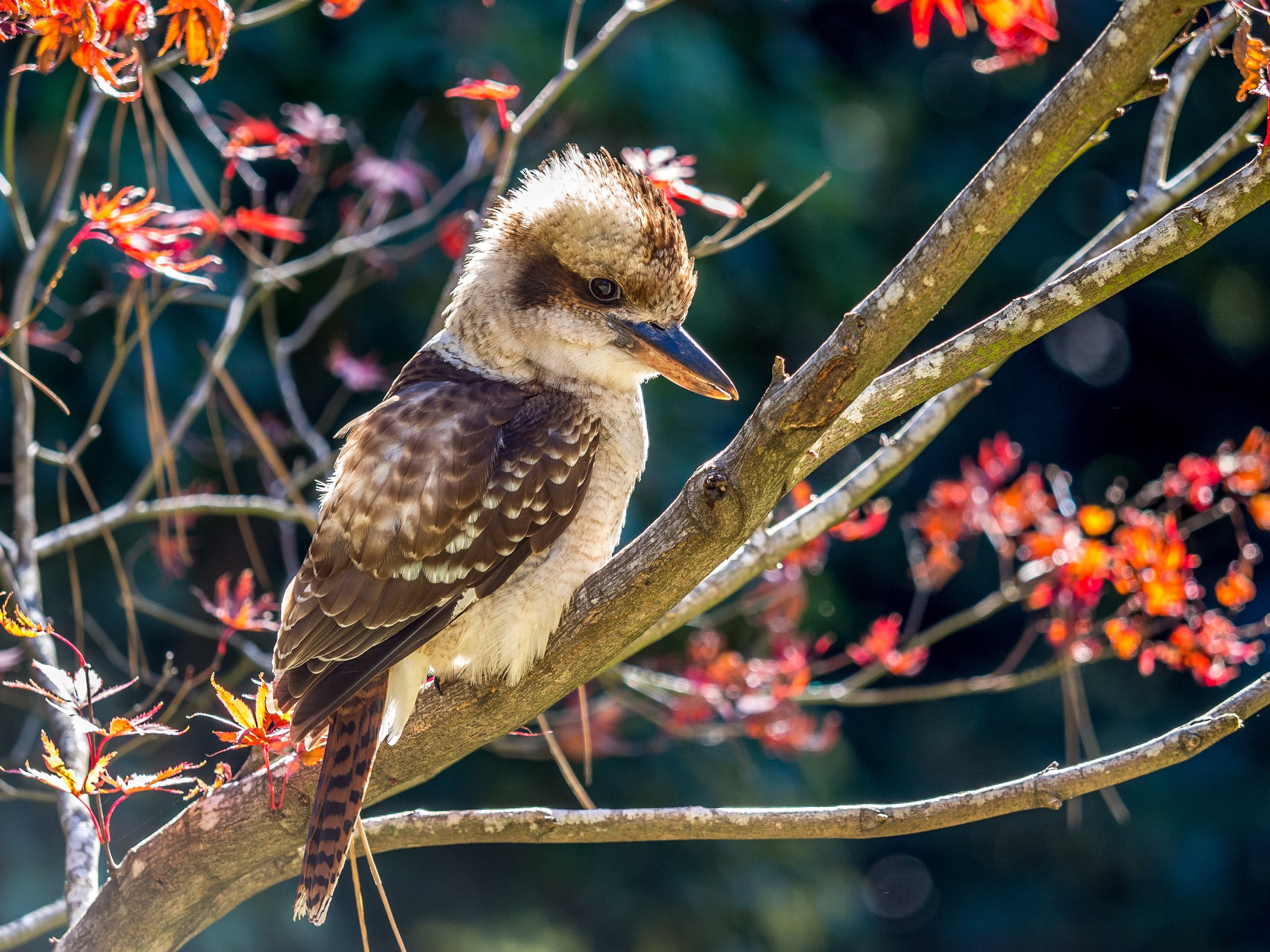Native Plants for our locals !
How do you encourage the local birds, butterflies, bees and insects into your garden.
Firstly providing mature native trees to provide nesting sites, places to rest and hide from predators, night roosts, flowers for nectar, with insects buzzing around the flowers. Banksia, flowering gums, banksia are all suitable.
An understory of flowering shrubs and grasses, provide shelter for smaller birds. Although the birdbath does not need to be fancy it needs to be kept filled, as birds will come to rely upon it. Each bath or pond must be carefully sited to allow small birds to dive quickly into nearby cover.
When creating your garden for the locals, vary your plant selection, too many of a particular type of plant will attract a limited range of birds.. Shelter for small birds such as- wrens, thorn-bills, add prickly dense shrubs – Hakea, Acacia, leptospermum.
Shelter for bigger birds (magpie, owls, Tawny frogmouths,parrots ) Tall trees – eucalypts, casuarina, banksia, acacia.
Insect hosts for robins, wrens, treecreepers
Acacia, bursaria, correa, hardenbergia, melaleuca
Our gardens can play a major part in the natural world, providing shelter and food for our native wildlife. The best way to nurture our local ecosystem is to provide food and water in your garden, even keeping part of your garden alive and adding a birdbath and low water bowl will help in dry conditions.
Flowers produce nectar and pollen, the main diet for many adult insects and birds. Flowers are essential to grow native bee populations. Planting natives as well as other flowering plants is so very important. Our gardens are important for our health as well as our local wildlife.
Citrus Gems is a collection of citrus native to Australia with reliable, vivid and flavoursome fruit. Finger limes grow as a large dense shrub or small tree but if you have the space they also make a fabulous informal hedge that beneficial insects and birds will appreciate as much as you. Known and enjoyed for centuries by indigenous Australian’s native limes are now hugely popular with the domestic gardener through to the professional chef.
Citrus Gems are a group of adaptable, quirky trees, uniquely Australian and tolerant of a wide range of conditions. They are suited to both pot and garden.
Ask our team about trees and shrubs that will A garden is a retreat from the demands and pressures of modern life, and visiting birds add moments of delight to any garden haven. But there are some tricks to encouraging native birds into the garden.
In the bird world the big motivators are survival and procreation. If a bird knows it can get a feed and be safe from predators, it's more likely to visit. Although there is some crossover, generally the diet of birds puts them into four broad categories - nectar feeding; insect feeding; fruit and seed feeding; and carnivorous.
The birds groups
• Nectar feeding birds have long, brush-tipped tongues for dipping into flowers. The flower provides the food source and the birds repay them by taking pollen from one flower to the next, thus facilitating cross pollination.
• Fruit and seed eating birds include the fig parrot, whipbird and many rainforest birds. They love the berries produced by Syzygium 'Bush Christmas'. Another plant to provide food for this group is the Grevillea heliosperma.
• Insect-eating birds like similar plants to those of nectar feeders, so if you've got nectar-feeding birds, you'll have the insect-eaters too.
• The carnivores include butcher birds, kookaburras, currawongs and owls. To get them into the garden you need wildlife and the best way to do that is to stop using nasty pesticides, herbicides and fungicides. This encourages a natural biology in the garden and brings wildlife such as insects, small lizards, worms and frogs.
The bird attracting plants
• Grevillea 'Honey Gem' is a plant the rainbow lorikeets love. They adore the nectar and seeds and they won't knock back the odd insect or two either. Grevilleas are great bird plants. The denser and pricklier the foliage, the better protection it gives birds from predators and it also provides fabulous, safe nesting sites.
• Grevillea 'Scarlet Sprite' is another good smaller-growing variety that affords birds plenty of protection. It flowers in the cooler months, giving birds a winter feed.
• Grevillea 'Firesprite' is a favourite of the scarlet honeyeater.
• Kangaroo paws used to be hard to grow in some locations but, thanks to modern breeding, varieties will now grow just about anywhere, and they attract honeyeaters, red wattle birds and eastern spinebills.
• Banksias are a bit of an all-rounder. They're nectar-bearing, so that means they attract the nectar-feeding birds, like wattle birds, but they also carry seeds and that means they bring in the seed-eaters, such as cockatoos.
• Callistemons or bottlebrushes attract a variety of birds, including the insect eating fairy wren.
Some more tips to attract birds
• Native birds are especially attracted to red and yellow flowers, according to the textbooks, so keep that in mind when you're selecting plants.
• Generally it's good to have plants flowering at different times of the year, so you've got a year-round display of colour and a constant presence and diversity of birdlife in the garden.
• Reliable water encourages visits for a drink or a dip. But remember that birds like the water elevated so they feel safe.
• Try using a nesting box as a bird feeder. But don't overdo it - just put enough feed to attract birds, not enough to make them dependent on you. This could upset the ecological balance in your area and that's the opposite of what you're trying to achieve.
Seeing birds playing their role in pollination, dispersing seed and keeping pests, like snails and insect larvae, under control is part of the joy of seeing birds in your yard. Follow these tips to be on the way to helping the environment and enjoying the sights and sounds of some wonderful winged visitors.
Ask our team about suitable plants for your native garden.
Dungog Area Birding Route





